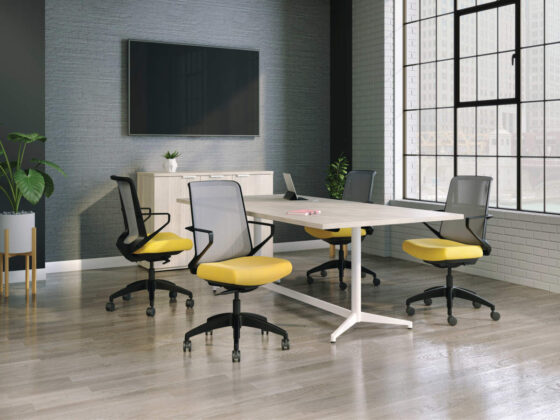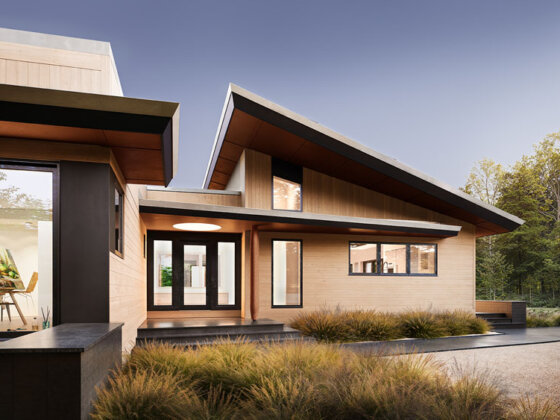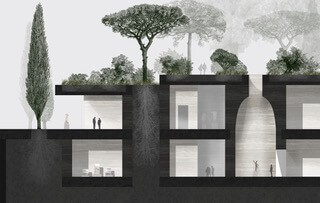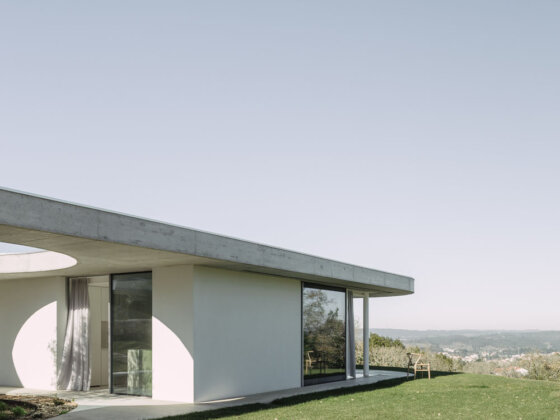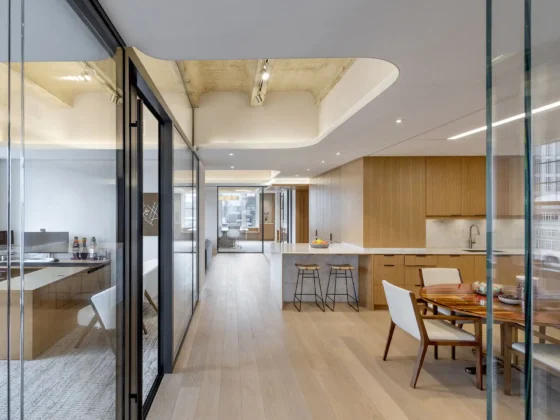Xuhui District, Shanghai, China
“Pushing and pulling the interior spaces of the headquarters creates terraces and cantilevered meeting areas that blur the distinction between indoors and outdoors and result in an indeterminate, cloud-like form,” says SOM design partner Scott Duncan.
“[This symbolizes] both Alibaba’s extraordinary digital presence in the Cloud, as well as the technology industry’s shifting skies of innovation.”

Skidmore, Owings & Merrill has revealed its designs for the headquarters’ expansion of Alibaba in Shanghai’s Xuhui District, consisting of a group of dynamic cubical-shaped structures arranged in the form of a cloud, a clear reference of Alibaba’s extraordinary digital presence in the Cloud, as well as the technology industry’s shifting skies of innovation.
SOM’s expansion design includes a modular design beset by biophilic elements and a network of indoor-outdoor “collaboration bridges” designed to increase productivity and induce healthier work habits in line with Norman Foster’s gridlike headquarters building that is located next door.
“The only constant change is one of Alibaba’s guiding principles,” states Duncan.
“We took this ethos to heart, designing a workplace capable of evolving and adapting to new needs, teams, and technologies over time. The headquarters is designed in dialogue with the existing campus, inverting the neighboring building as it unfolds across cantilevered masses and staggered, green terraces,” he continues.

In order to accommodate Alibaba’s growing team and evolving philosophy, SOM’s design includes flexible, column-free interior spaces and a series of interconnected terraces that allow workers views of the nearby Huangpu River.
It has a high-performance façade capable of redirecting up to 40 percent of solar heat gain and an AI-controlled shading system that can be programmed to respond to the sun’s movement and intensity.
The building comprises indoor and outdoor workspaces surrounding a courtyard.
There are also meeting spaces open out onto outdoor terraces that offer access to nature and views of the river.

Communicating stairs and bridges between the spaces encourage people working in different areas of the headquarters to connect with each other.
Around the structure, outdoor spaces contain sheltered seating and areas of greenery, which the studio hopes will be beneficial to employees.
According to the architects, Alibaba’s Shanghai headquarters will target both low embodied and operational carbon. The studio has aimed for the design to exceed the requirements for LEED v4 and China Green Star. Roof gardens will harvest rainwater and smart systems will cycle fresh air, reducing the need for cooling.
The façade has been designed to redirect up to 40 percent of solar heat gain, along with minimizing glare and wind tunnels. An AI-controlled shading system will allow for temperature moderation by responding to the sun’s movement.
“The structural system is primarily steel to allow for high levels of off-site prefabrication and reduction of waste,” says Duncan.
“The dynamic glass is unique in that the shades have been engineered to work as an integral part of the building’s thermal comfort system – a truly smart skin that will get smarter as the building learns over time.”



Project: Alibaba’s Shanghai Headquarters
Architects: Skidmore, Owings & Merrill LLP.
Design Partner: Scott Duncan
Client: Alibaba Group Holding Limited
Renderings: Skidmore, Owings & Merrill LLP.

